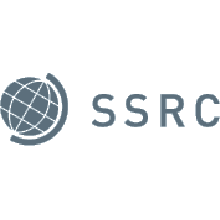LINKING STRATEGY IMPLEMENTATION TO PERFORMANCE: INSIGHTS FROM KENYA’S HELICOPTER COMPANIES
LINKING STRATEGY IMPLEMENTATION TO PERFORMANCE: INSIGHTS FROM KENYA’S HELICOPTER COMPANIES
Davies Kibet Langat - Master’s Student, Department of Business Administration, Kenyatta University, Kenya
Dr. Anne Muchemi - Senior Lecturer, Department of Business Administration, Kenyatta University, Kenya
ABSTRACT
The helicopter operators in Kenya had to deal with continuous challenges such as high operating costs, fluctuation in fuel prices, strict regulatory requirements, and shortage of skilled workers which were detrimental to their performance and they were going to face extinction along with the resultant poor service, ineffective operations, and lack of development. This study investigated how strategy implementation practices, specifically resource allocation, training, communication and organizational culture influence organizational performance. The research was guided by The Resource-Based View Theory, Human Capital Theory, Balanced Scorecard Theory, and McKinsey 7-S Framework. A descriptive research design and census approach were employed, targeting 120 staff from 10 helicopter companies. Data were collected through structured questionnaires and document reviews, with reliability confirmed using Cronbach’s Alpha (≥0.7) and refined through a pilot test. Both descriptive and inferential statistics were applied in analysis. It was revealed that helicopter companies operating in Kenya were very good at strategy implementation. The main drivers of performance (R² = 0.696) were: training (β = 0.312), organizational culture (β = 0.274), resource allocation (β = 0.258), and communication (β = 0.205). Safety training and fleet maintenance were at the top of the list, while investment in technology and customer service training were at the bottom. The research stated that training is the biggest factor of performance, which is further supported by a strong safety culture and effective communication. However, there is limited innovation and weak feedback loops which slows down the adaptability of these companies. It suggested that the companies should increase their investment in technology, extend the offering of their customer service training, and facilitate two-way communication while balancing it with the promotion of innovation alongside safety to maintain a competitive edge and achieve operational excellence.









